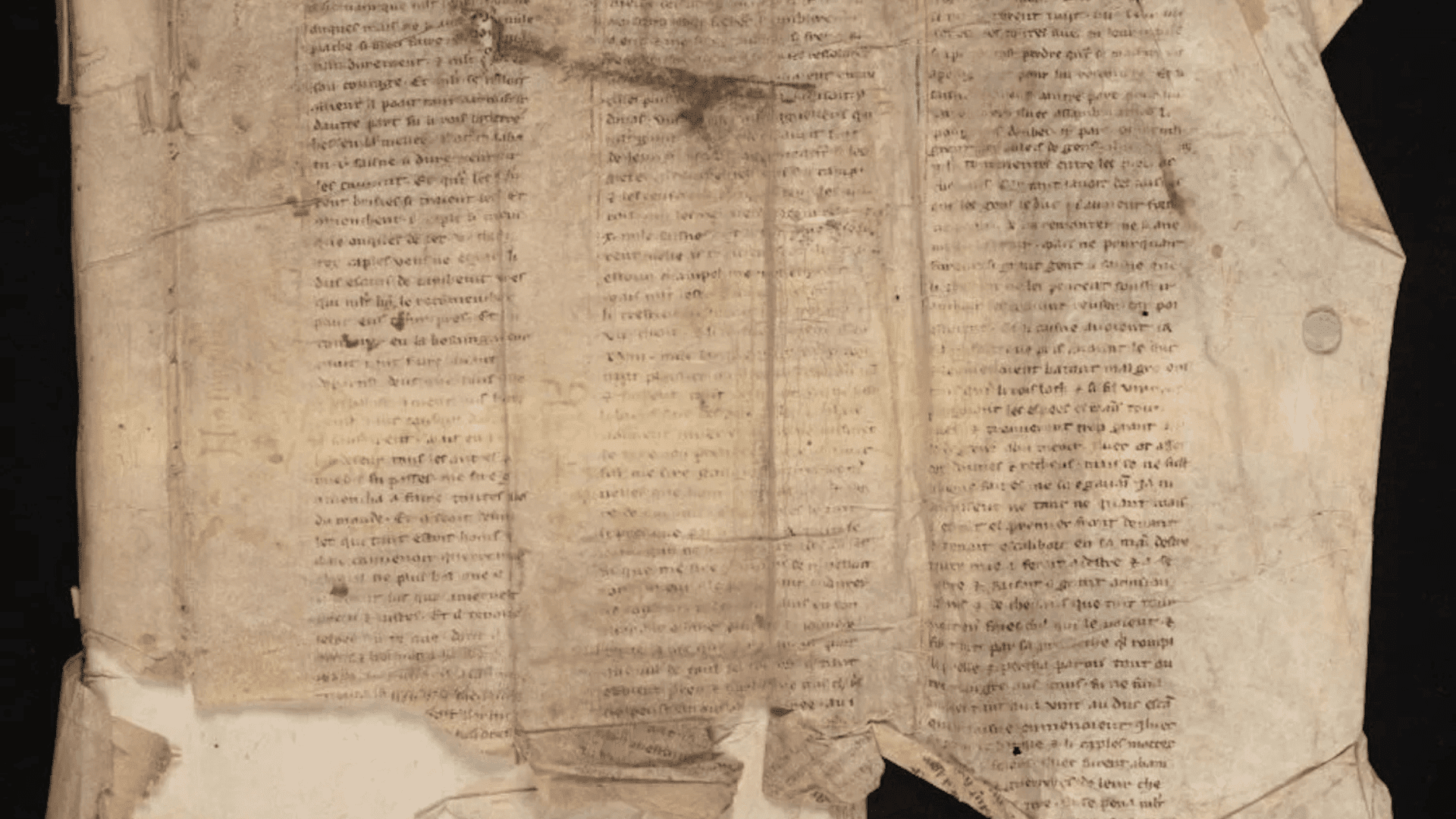Archivists combined multiple conservation tools and techniques to construct a 3D model from fragments of a rare Merlin and King Arthur text dating back millennia. This allowed researchers to examine the obscured text without needing to physically handle the delicate pages.
3D Modeling

Working alongside the University of Cambridge’s Cultural Heritage Imaging Laboratory (CHIL), the 3D models created by archivists included multispectral imaging (MSI). This technique creates high-resolution images by scanning an artifact with wavelengths ranging from ultraviolet to infrared light.
Then, the team borrowed CT and X-ray machines from Cambridge’s zoology department to examine the parchment layers and map unseen binding structures. The CT scan also showed how the pages were stitched together using thin strips of similar parchment.
As some of the Merlin texts were obscured by folds or stitching, the team amassed hundreds of images from every angle using an assortment of prisms, mirrors, magnets, and other tools. This resulted in a high-definition, digitized 3D model of the relic that can unfold, enabling researchers to examine it just as they would with the physical manuscript.
“If this had been done 30 years ago, the fragment might have been cut, unfolded, and flattened. But today, preserving it in situ gives us a crucial insight into 16th-century archival practices, as well as access to the medieval story itself,” Irène Fabry-Tehranchi, a French specialist in the Cambridge University Library’s collections department who helped oversee the project, said in a statement.
Research Results
The findings revealed new sections of the rare text, Suite Vulgate du Merlin, which experts believe originally belonged in a shortened edition of the story. The red and blue ink used in its handwritten initials, along with small typographical errors, have led historians to believe the artifact dates back to sometime between 1275 and 1315 CE.
“Further examination revealed it to be part of the Old French Vulgate Merlin sequel, a different and extremely significant Arthurian text,” Fabry-Tehranchi said.
With this project’s success in terms of translation and digital preservation, the team hopes similar techniques can be applied to other conservation projects involving delicate or obscured artifacts.
“This project was not just about unlocking one text—it was about developing a methodology that can be used for other manuscripts,” said Fabry-Tehranchi. “Libraries and archives around the world face similar challenges with fragile fragments embedded in bindings, and our approach provides a model for non-invasive access and study.”







